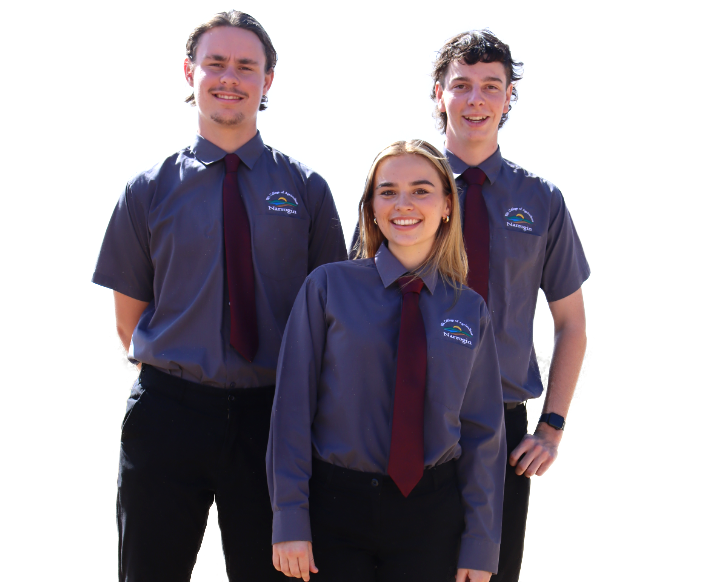The 1920s: A Major Step Forward
From January 1921 the situation at NSA changed rapidly. The school was placed under the control of the Education Department and a vigorously progressive policy began. The teaching staff was strengthened, the curriculum broadened and a program of building construction began. Certainly the school now offered a firm grounding for lads who wished to take up farming or careers in the manual trades.
The boys time was divided equally between class work and farm work, usually one day in class and the next on the farm, the boys gained practical experience in all seasonal farm tasks including ploughing, harvesting, chaff-cutting, silage making, butchering, fruit-picking, jam-making and bacon-curing. The class work covered English and Mathematics up to junior standard, theoretical Agricultural Science, Physics, Chemistry and Bookkeeping. There was also practical work in three workshops.
Mrs Shugg had the job of Matron; she provided a warm motherly presence for the boys particularly during episodes of mumps and flu. She and the other staff member’s wives catered for the Ball and school socials.
In 1922 a former student Patrick Cullen who with Shuggs encouragement attended the University of Western Australia to complete a diploma in Agriculture was appointed as science master and soon became “Gerv’s offsider” He was enormously popular with the boys being a first-class batsman and bowler and captain of the Imperials football team.
The three workshops had fine tradesmen as teachers. Parents particularly appreciated the harness making and repairing skills the boys learnt. The greatest honour for a boy was to have a football made in the saddlery shop actually used in a football game.
The school now boasted a fairly typical mixed farm, with up to 600 acres under cultivation. The pure-bred dairy herd of 27 milkers supplied milk for the school and cream for the local butter factory, while Border Leicesters provided meat. There were about 40 Berkshire pigs, a poultry collection of 100 Leghorns and Black Orpingtons, a vegetable garden and two well established orchards. The effects of nitro-super and basic fertilisers were being trialled on crops and pastures. The school maintained 24 horses but in 1925 it purchased a T-model Ford truck which was used for carting and sometimes replaced the drag for taking boys into Narrogin.
The food at this time was plentiful and wholesome, it was cooked by a big man named Old Bert and served by two waiters. In summer the school dam at the bottom of the orchard was very popular for swimming and many students became quite adept at diving from the spring board. A highlight for the boys was the annual dance. On the night of the Ball the girls all previously approved by Mrs Shugg, were brought out from town in the drag or on the back of the truck. The girls then invited the “Ag” boys to a return dance in the town hall with their mothers lining the walls acting as chaperones. There was also a farewell dinner for the second year students, with the first years usually taking this chance to short-sheet their beds.
Considerable improvements and new buildings were constructed by the end of the 1920’s making the NSA an impressive looking facility.





